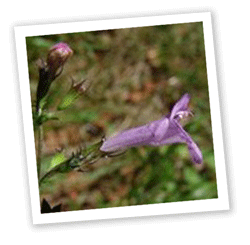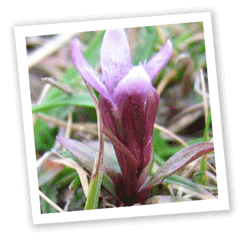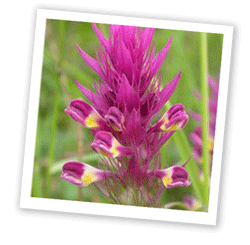|
|
plants and flowers
Find out more
The plants and flowers of the Isle of Wight are many and diverse, following the intricate and varied landscapes of the Island.
External linksFlora locale the UK national charity promoting the wise use of native flora.
Find Wildflowers Online: an online key to the UK flora.
Plants for a Future a resource centre for rare and unusual plants, particularly those which have edible, medicinal or other uses.
Landlife with links also to the new National Wildflower Centre
Gardens, Plant Nursery and Orchard at Afton Park, Freshwater
English Cottage Garden Nursery: a good place for native plants and some useful planting advice.
The Isle of Wight is, for its size, remarkably rich in plants. The maritime location of the Island, off the south coast of Britain, ensures a climate without extremes. The Island’s varied geology gives rise to a range of landscapes that is unique -a microcosm of southern England.
The Island is home to a surprisingly large number of nationally scarce plants, but it is the sheer variety of habitats in close proximity, woodland, saltmarsh, sand dunes, shingle, cliffs, wetlands, heathland and downland, that makes the plant life of the Island so special. By contrast, the Island's isolation from the mainland has meant that some relatively common plants are not established here.
Plants special to the Isle of Wight
Wood
Calamint (Clinopodium menthifolium)

Martin's Ramping-fumitory (Fumaria
reuteri)
Martin's Ramping-fumitory has only ever been recorded from 14 sites
in southern England. Recent records come from three sites in a small area
near Truro, Cornwall and from one site on the Isle of Wight, where it grows
on allotments in the east of the Island. One of the main reasons for the
decline of this species is the reversion of cultivated agricultural land
to grassland.

This species is found on grazed chalk grassland. Early Gentian flowers during May and June, but can appear as early as April and persist as late as July. Early Gentian is a rare UK endemic species that has declined dramatically in recent years. This attractive plant has the typical 'trumpet-shaped' flowers characteristic of its family, which are purple with fine white hairs on the inside of the bell, and up to 16 mm long. The leaves are narrow and spear-shaped, and grow from the main stem with no stalks of their own. The centre of distribution is around Wiltshire, Dorset and the Isle of Wight.
Field cow-wheat (Melampyrum arvense)

This colourful endangered plant has pale green, toothed and narrow leaves that grow on opposite sides of the stem. The flowers grow in a spike known as an inflorescence, and are generally purplish-pink in colour with a yellow throat and lip. Long, thin bracts also emerge from the flower spike; these can be green, deep pink or white in colour. A local name for this species is 'poverty weed' as the seeds gave a bad taste to flour and devalued the price of corn. This species was first recorded in 1724 in Britain, and is probably native to the Isle of Wight, but may be introduced elsewhere. Never a particularly common species, field cow-wheat was known from the south and east of England.
At present it occurs at just four sites, in Wiltshire, Bedfordshire and on the Isle of Wight. This annual plant is hemi-parasitic, this means that its roots attach to those of other plants and it is able to obtain some nutrition from them. Plants grown in the absence of a host fail to thrive. A wide range of plants can be used as hosts, especially grasses. Field cow-wheat flowers from June to September, the flowers being pollinated by bumblebees. The heavy seeds are poor dispersers and can stay dormant in the soil for about two years. They have a small oil body at one end, which is attractive to ants, who may carry the seeds to their nests, eat the oil body then discard the seed. By doing so they aid in the dispersal of the plant. The seeds are unusual in that they germinate in the autumn, and the roots develop well before the shoots (which develop in the spring); presumably this is so that the seedlings can attach themselves to the roots of host plants quite quickly.
| home | partnership | habitats | species | biodiversity opportunity areas | benefits of biodiversity |
biodiversity & you | advice | walks & events | library | contact |